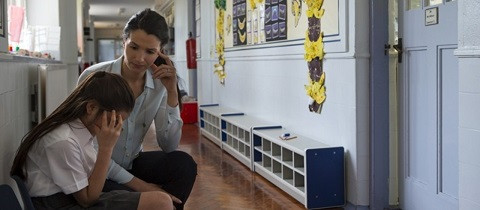
GCED Basic Search Form
Quick Search
Вы здесь
Новости

What are the ways in which educational actors can make a positive difference for young people at risk and draw them away from the shadows of hate and crime? This was the main theme addressed at the meeting of 9 March 2021 Transformative journeys of youth at risk: Education countering violent narratives during the Fourteenth United Nations Congress on Crime Prevention and Criminal Justice (7-12 March 2021, Kyoto, Japan).
Schools and teachers can be a valuable source of support for distressed students, according to Ms. Neha Sharma, principal in India. She recalled a time when one of her students, of just 14-years of age at the time, had been indirectly involved in a crime. Noticing that he was outcasted by classmates and neglected by teachers, she reached out to the student and “he poured his heart out and shared his feelings of loss, guilt and heavy remorse.” Today, as a settled and educated adult, he tells his former teacher, “you were compassionate and non-judgemental. You gave me a fair chance and I shudder to think that had you not been there to support me in those days, I might have dropped out of the school or have done something even more stupid!”
Interestingly, teachers and schools can be a source of positive influence, even once a young person has been radicalized. Vasty Miguel, a youth based in Belgium, recalls that “nothing could stop me in my downfall. Neither my family, nor my friends, nor my hobbies, nor my ambitions. The trusting relationship I had built with my school and teachers was my way out.” By providing youth with a space to express themselves and involving them in projects and fun educational activities, Vasty states that the Citizen Ambassadors programme, which is a mentorship programme by and for youth, “diverts young people from the voices of violence.”
However, sometimes youth are not diverted in time and end up engaging in criminal activities. What hope or transformation can education offer them? Adinaraina Subramaniam, who worked for 37 years in Malaysia’s prison department, explained how the correctional institution can be transformed into a school. Adina described a programme where young offenders move through phases beginning with self-discipline and positive emotional and attitudes skills development. After one year of vocational and occupational therapy, the youth enter a reintegration phase with short periods of release into the community. Moreover, organized traineeships open doors to jobs following release. This phased approach to rehabilitation focuses on educating the person and reduces the risk of crime and radicalization deriving from the lack of skills and opportunity.
According to Dina Buchbinder, founder of Education for Sharing (E4S), another innovative approach to prevent youth crime is using the power of play for transformation. Youth, in most of the contexts where E4S works, are surrounded by violence, drugs, poverty and discrimination which can be “fertile ground for crime.” Dina explains that E4S works “hand in hand with teachers, parents and other members of the community to train youth on the process of learning through the play methodology. Adults start interacting in a different way that allows both them and the youth to gain a different self-perception and deconstruct destructive patterns,” and she continues that young people “realize they have the power to choose and this is a profound paradigm shift. They discover their power as change agents and the effect they can have in their community and in the world.”
In order to make this paradigm shift sustainable, it is important to provide not only knowledge, but also the means to young people. Nelson Kwaje, a South Sudanese technologist and human rights campaigner, finds that engaging youth in peaceful transformation must also include providing them with resources, and agency and decision-making capabilities. As part of his work at the NGO #Defyhatenow he encourages “pushing decision-making to the peripheries, that is, directly to the young people who are closest to the point of contact.” Through the fellowship programme, Act4Peace, for instance, youth are provided with micro grants to initiate actions, such as starting outreach programmes at school, or organizing dialogues between church leaders and imams in their communities.
The voices of these youth’s leaders on the transformative power of education were moderated by Elodie Beth-Seo, Senior Project Officer at UNESCO and amplified by the launch of the (jointly produced) UNESCO-UNODC documentary Youth Can Move the World. In this video, the voices of youth reverberate robustly, and their empowered sentiments are echoed by world leaders, policy-makers, justice actors and educators, to deliver a compelling message on agency and empowerment.
This meeting is part of the UNESCO and UNODC partnership on Global Citizenship Education for the Rule of law, that aims to bridge the worlds of education and justice under the umbrella of Education for Justice, an initiative supported by the State of Qatar. Marco Teixeira, Senior Programme Officer at UNODC and Coordinator of the Global Programme of the Doha Declaration, noted in his concluding remarks that “this unique partnership has managed to help educators and education professionals in designing and implementing educational interventions that equip young leaders with the knowledge, skills and attitudes necessary to constructively and responsibly engage in society. This includes upholding the principle of justice and building effective, accountable and inclusive institutions at all levels.”
URL:
https://en.unesco.org/news/role-education-transformative-journeys-youth-risk
